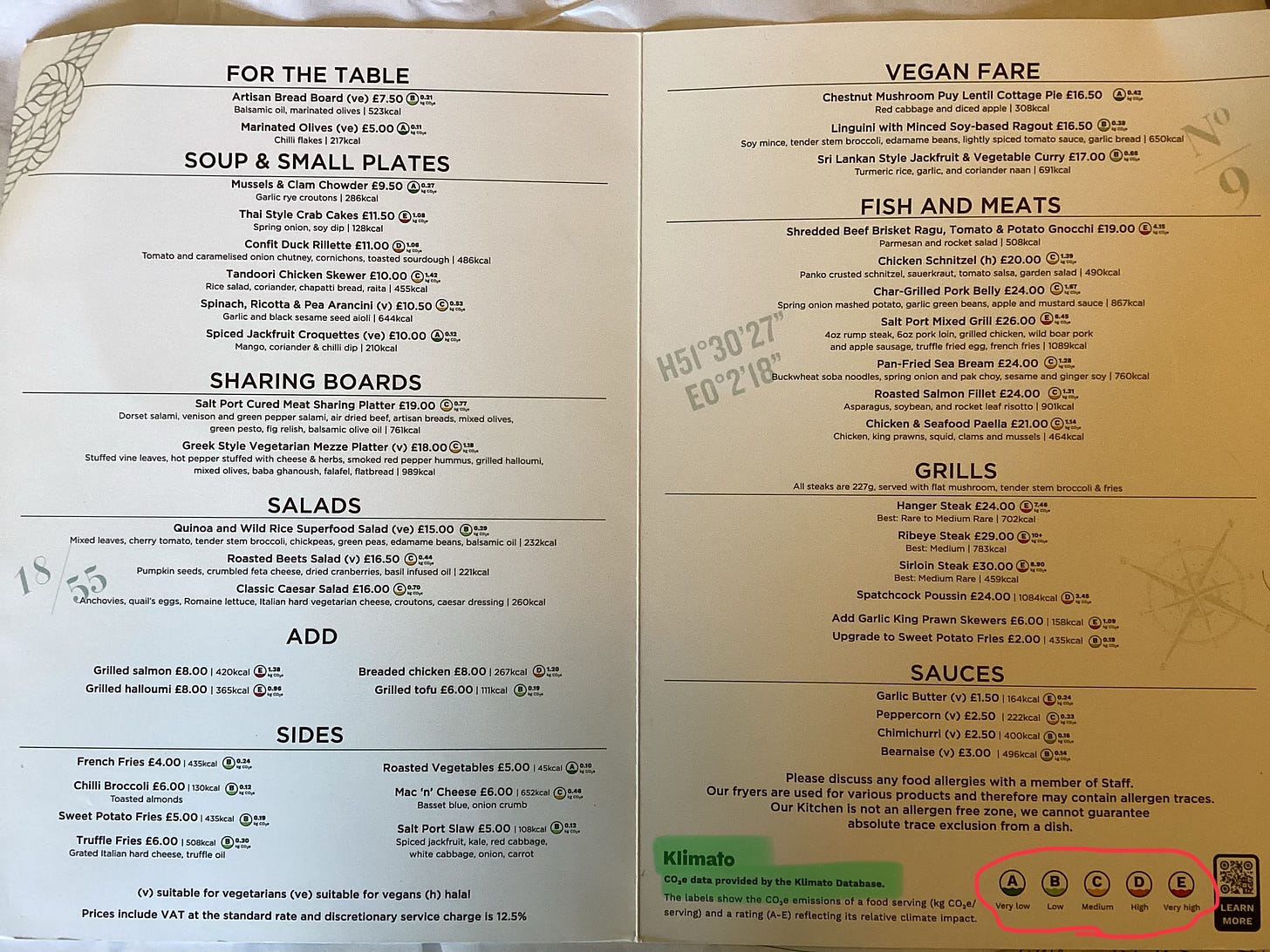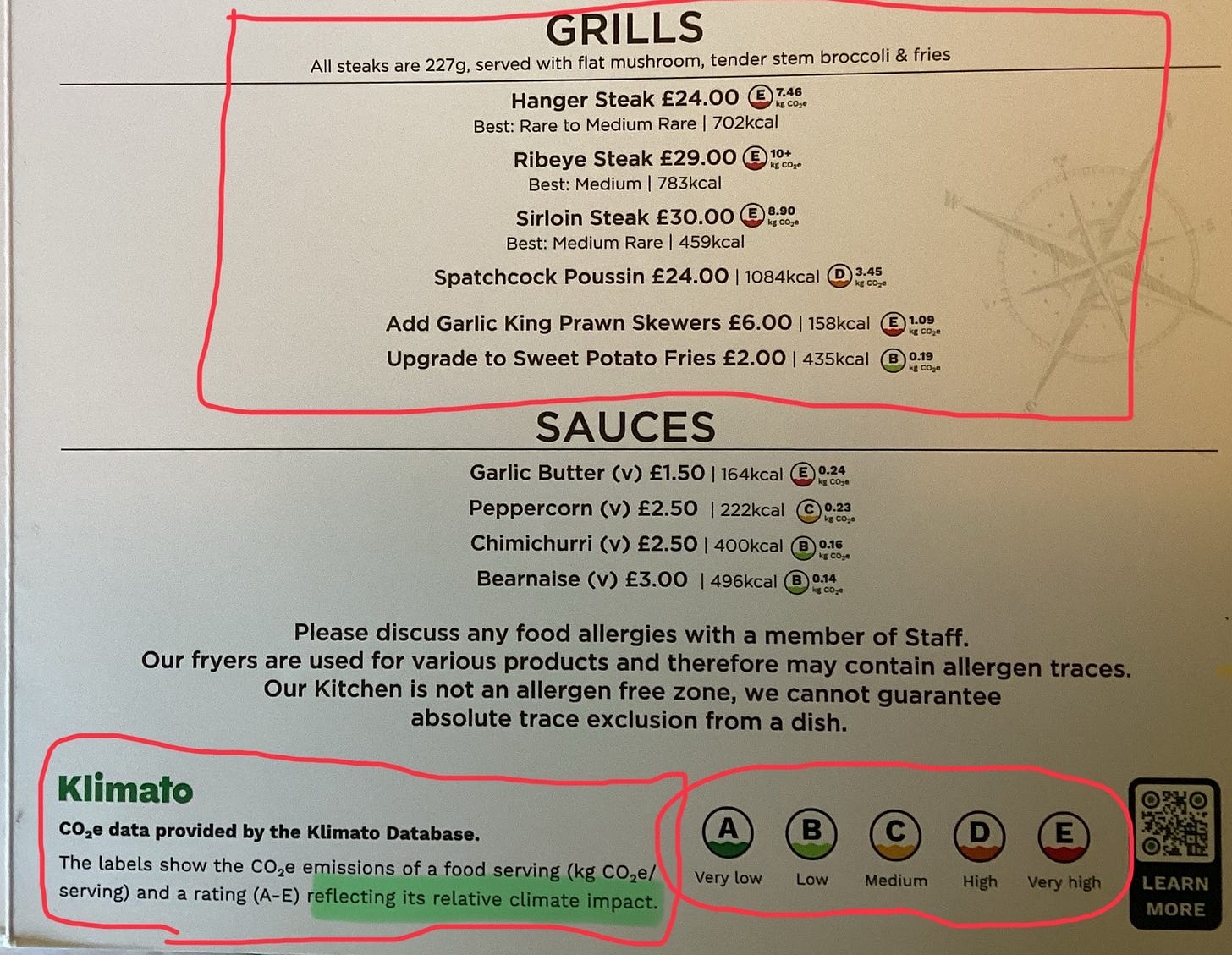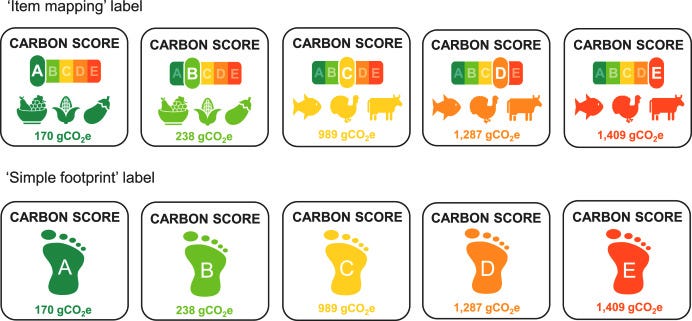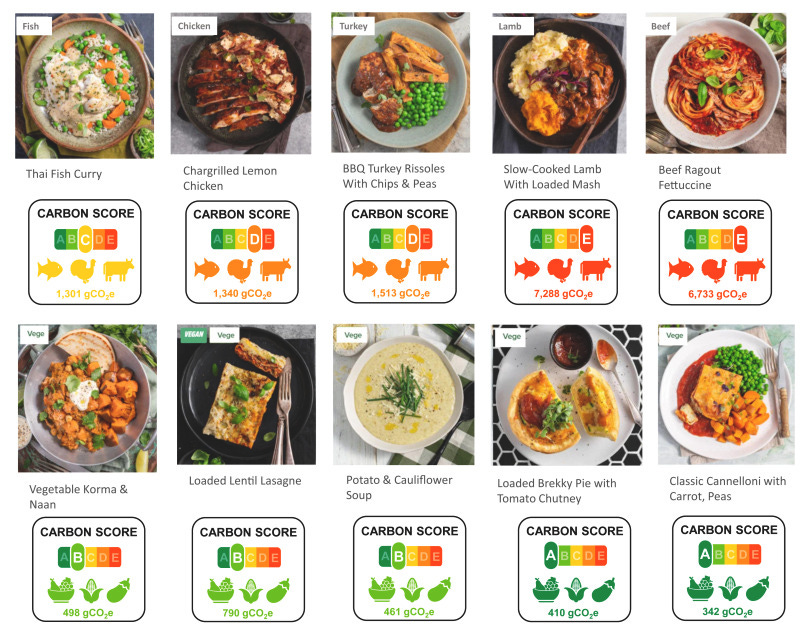CO₂ on the Menu at a Restaurant Near You
Enjoy a juicy burger or steak, offset CO₂ somewhere else!
Above: this luscious chargrilled masterpiece is worth 6.50 kg CO2 equivalent. To make up for it, drive an EV.
Tuco’s Child Preface
Hello Readers, I remain ever vigilant in looking for new and obscure subjects about “human-made global warming” that hopefully will elicit some interest, chuckles, and educate as well. To that end, we recently reported on concerns that anesthesia gases used in surgery cause global warming, per below:
Being a sensitive soul, below I share a caveat to consider going forward:
In my writings I may use the term “human-made global warming” vs. “man-made global warming” so as not to offend men.
Having got all that out of the way, I am pleased to share a new CO2 nugget entitled Emissions On the Menu and first published in an inspirational Substack called the Nemeth Report.
Above: these yummy sugary carbs are terrible for you, but are only worth 0.50 kg CO2 equivalent. Go for it! Now you can take a flight to Europe, guilt free.
Emissions On the Menu from the Nemeth Report.
A few weeks ago, I had dinner at a restaurant at a Hilton hotel in London. Although the menu contained the usual trendy British items like a quinoa superfood salad, truffle fries, grilled pork belly, the requisite vegan items, and even a selection of steaks, it also had a colour coded letter grade score beside each item.
No, the score wasn’t for the calorie count (which was also included), nor was it for the popularity of the item; the letter grade was the CO2 emissions score of each dish calculated by a group called Klimato.
Not to be confused with the tasty North American vegetable drink Clamato juice, Klimato is very serious about its mission to help shift consumer behaviour away from meat and dairy products towards meatless alternatives.
The Hilton menu scores each item from A to E – “A” being a nice green cool approving colour, “C” being a warning yellow colour, whilst “E” is an angry boiling red colour. If you’re in the mood for a steak, or maybe you’d like some garlic butter on your bread, then you’ll be faced with the angry red “E”. But if you’d like a side of marinated olives, or jackfruit croquettes, or a chestnut puy lentil cottage pie, then you’ll be rewarded with a cheery green “A”. If you’d like to add some protein to your salad you better not choose grilled salmon because that will get you a big fat “E”, just add grilled tofu for a respectable “B”.
It almost feels like a school report card, which is probably the point. Perhaps in a few years the grading system will change to make the “E” an “F” – After all, who wants to get a failing grade? There’s nothing like going out for dinner and being lectured by a menu.
To be fair, the labelling of climate scores on this particular menu were fairly subtle and I haven’t seen the menus from other hotel chains the Klimato site says are clients.
However, there are other labels being tested to see what has a greater impact on shifting consumer behaviour. Enter a group of academics out of Australia. Last week, the online publication The Conversation had a piece from an academic whose team did a study to find out the best way to manipulate, I mean nudge, people into ditching meat and non-organic food. Although their study had some flaws (their choice of meals and snacks to test on American participants were a bit strange), their conclusion was that when the labels were clear and bright, and showed the “granular differences between and within animal-based and plant-based options,” (that’s the first row below) the subjects of their study tended to choose items that were in the green or yellow (plant based or lower emissions fish or meat) and not in the red (beef, lamb, dairy).
Perhaps it’s notable there were no burgers, no pork, and no standard fish dishes. The study concluded with the appeal that their type of labelling ought to be considered by policymakers because their labels identify the source of emissions, and they believe that particular information can sway consumers because “social behaviors can be primed by subtle environmental cues.”
The last point made by the authors was that there is still a large part of the population who resists so-called “sustainable consumption” (that’s the fancy way of saying non-meat or dairy). Therefore, and this is standard for every academic study, they call for more research!! (that’s a shout out for more funding) to figure out “how to make these consumers engage in sustainable consumption and what interventions would be effective at changing their behaviors.”
Back to the menus and other initiatives to change what people eat: Why would hotels, caterers, schools, and restaurants sign on to this kind of scolding social engineering initiative? As climate disclosures and ESG reporting become mandatory in the UK, EU, Australia (and in the banking sector in Canada), with the accompanying requirement for transition plans (transition plans must outline how an organization will reduce its emissions over a period of time), organizations will need to forecast their emissions and plan how they will be reduced over time. The pitch is that, having this kind of data will enable organizations to track not only their overall emissions, but also how many low emissions meals were served versus high emissions meals and how those numbers have changed over time. By demonstrating that emissions numbers are going down organizations may be rewarded by their banks, investors, or insurers. as well as provide recipes and emissions labels for menus.
Companies like Klimato,a Swedish company but with offices in Sweden and the UK, offer a software solution to assist food providers in tracking their emissions. They offer a service to restaurants, hotels, and large food providers including caterers and schools to calculate the CO2 emissions score of their food supply chain and menu items to help measure, report, and reduce their emissions and “environmental impact.” A few universities in the UK use Klimato to “Incorporate sustainability into the dining experience, educating students on the environmental impact of their food choices and promoting eco-friendly behaviors.”
How does Klimato calculate its CO2 emissions score? It obtains information from the producer of ingredients on the growing, transport, processing, refrigeration, and packaging of the ingredients, then Klimato uses its Life Cycle Assessment methodology to make a calculation. If primary data is unavailable, then Klimato uses “the Product Environmental Footprint (PEF) methodology to fill gaps and maintain accuracy.” Rest assured! Their processes and methodology have been approved by the Global Reporting Initiative, the World Wildlife Fund Sweden (WWF), and the World Resources Institute (WRI).
Why the WWF and WRI? In 2018, WWF Sweden introduced the One Planet Plate criteria, establishing guidelines for the daily consumption of various types of food to maintain the planet’s temperature in accordance with the Sustainable Development Goals (SDGs) and various net-zero pathways:
“WWF Sweden has developed criteria for meals that adhere to planetary boundaries concerning two aspects of sustainability: climate and biodiversity.”
The criteria and the WWF labels have been used by large public institutions in Sweden such as schools. Given that Klimato is a Swedish company, it’s unsurprising that it would build on the WWF Sweden initiative and then receive further legitimization from the WRI.
The WRI has created its “Coolfood Meals” criteria to help “organizations reduce the climate impact of the food they serve by shifting towards more plant-rich foods.” You see, they’re called “Coolfoods” because they help keep the planet from heating! First it starts with the Coolfood pledge (why is there always a pledge?), then microchanges in supply chains, ingredients, and then offering Coolfood meals as menu items. Key collaborators with WRI’s Coolfoods are Sodexo (one of the largest institutional food services companies in the world) and Ikea (its restaurants and grocery stores). In 2019, Sodexo worked with the WRI to establish targets to reduce its emissions by 34% by 2025 to align with the Paris Agreement and introduced 200 plant-based dishes to its global operations.
Ikea’s Strategic Topic Leader for Healthy & Sustainable Living (wow, that’s quite the title!), Tanja Dolphin, explained on a Coolfood promotional video how Ikea is committed to the “behaviour change agenda”. Although Ikea may not yet have emissions labels on its menu items or in its grocery sections, the reason may be because it chose to focus on marketing. In the promotional video, Ms. Dolphin stated that they “underestimated the role marketing can play in the dietary shift,” and when they changed the descriptions of the meals to focus on the sauces and the herbs rather than the meatless meatballs, there was a higher uptake by consumers. It’s not just Sweden or the UK that is experimenting with consumer behaviour modification.
The first US national restaurant chain to introduce climate ratings or counters on menu items was Panera Bread. They partnered with the WRI to calculate the climate impact of menu items called "Coolfood Meals". Their target was to have 60% of meals chosen fall under the Coolfood Meals category. They achieved this in 2022/23.
It would seem that menu emissions labels are being trialled in different places to see what works, and large organizations or institutions are being convinced to gradually alter food choices to reduce the amount of meat and dairy available. Notably, Sodexo and some major cities like New York are introducing these initiatives to children at schools and other places where it is the sole food provider. But you see, most governments aren’t mandating this shift, it’s the choice of the food providers. Even with the changes happening in the United States to push back against some of this, there are cities in America, restaurant chains, and large corporations in other jurisdictions that are rolling this out. Watch out, you too might soon be seeing emissions labels on the menu at a restaurant near you.



















Urs, you are a refined gentleman with good taste.
You may consider switching to Italian reds - Meloni is easy on the eyes 👀 ❤️and is supportive of our current administration !
France = tariffs = bye-bye
Might as well just put an E on the logo for Mongolian grills and traditional Asian restaurants. We own a round bottom hand peened carbon steel wok. To make them work correctly you need a big hot flame, no induction here.